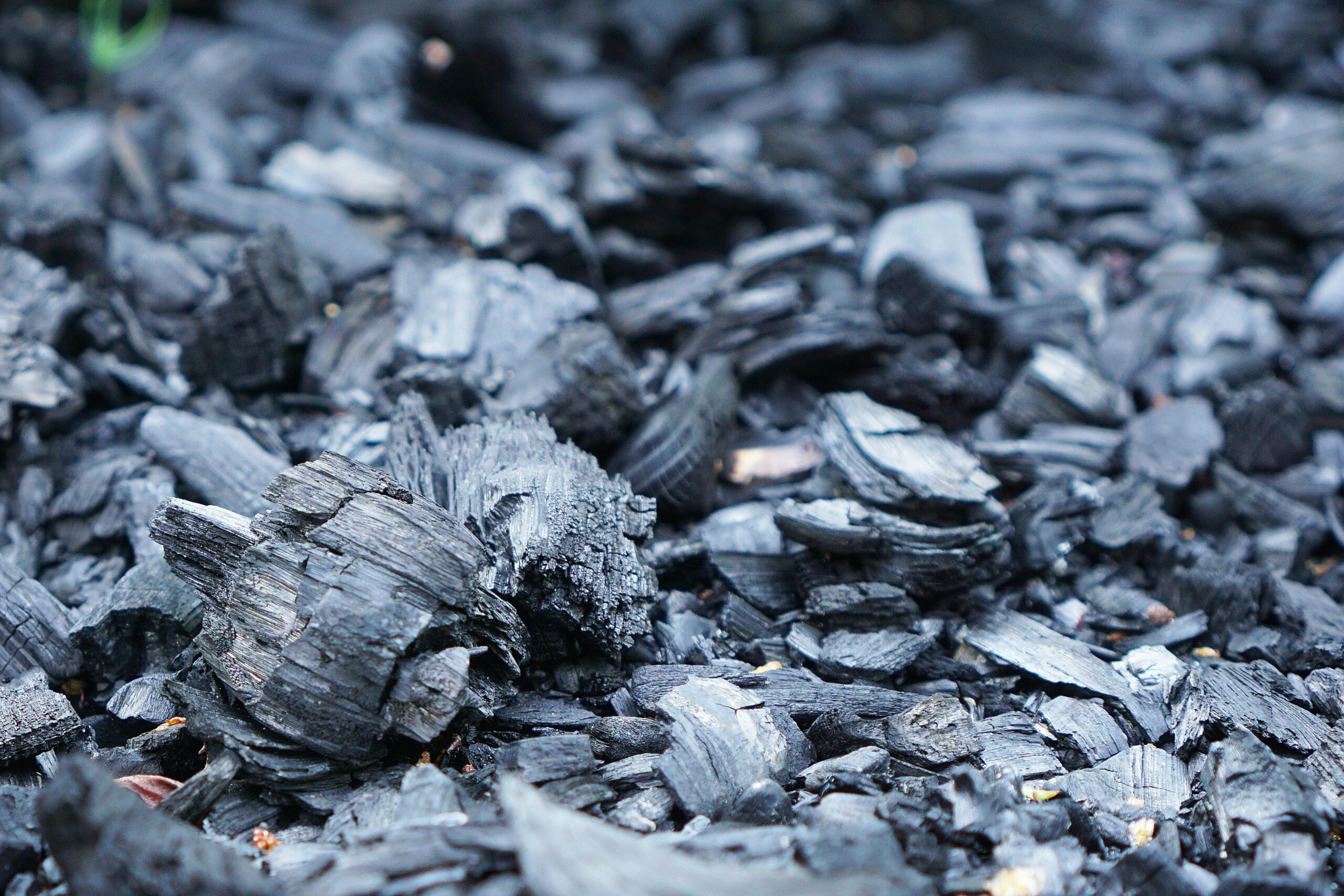All over the world, self-described scientists have been touting the virtues of biochar, claiming that it is the answer to solving the climate change problem. While biochar does have some saving graces as a climate tool it is impotent and archaic.
For those who don’t know, biochar is an ash/charcoal product that is made from biomass (rice husks, corn husks, grape vines, etc.). The process involves heating the material in a rotating kiln and in the absence of oxygen producing a charred material.
Proponents promote the fact that biochar reduces the amount of biomass that we have going to landfill. Which it does. They also promote the idea that biochar sequesters carbon dioxide from the atmosphere there by fighting climate change. While this sounds wonderful, it is mostly, excuse my language, a big pile of horseshit.
Biochar is largely a product promoted by bad scientists. Scientists who have no real experience in industry but instead have spent their careers in a university sitting on their asses. Making their work even more bizarre and useless, most of these researchers are paid to come up with results favoring biochar.
True scientists and engineers work within the confines of the principles of mass balance and energy balance. These principles basically require a scientist to look just as much as the negative aspects of a product, as they do the benefits. Just because lab result looks good doesn’t mean that product is good. As a for instance, people marvel at the prototype car that can run on water, by converting water into hydrogen fuel. Oh my God, this is the wave of the future, right? Running our cars on water? Sure, sounds good. Yes, until you realize that the energy required to produce hydrogen from water is 100-fold the amount of fossil fuel costs for the same amount of energy.
Along the same lines of flim-flam, this is how the science of biochar works. These nincompoops want you to only hear the positive sides of their product. Biochar does remove contaminants from soil and water, and it also reduces the amount of biomass going to landfills. Sound good? Sure, it does. That is until a real scientist, and not a paid satchel ass looks at the complete picture. Biochar has a lot of downsides. Because of these downsides, the charlatans promoting biochar have largely unable to find anyone interested in investing in it.

- Can decrease crop efficiency and quality by removing helpful fertilizers and pesticides from soil
- Dust can be carcinogenic and cause respiratory disease
- Storage can cause asphyxiation due to the oxygen scavenging properties of char
READ ABOUT THE DARK SIDE OF BIOCHAR
There are other reasons that biochar is finding strong resistance to investment.
- Anyone can purchase a kiln and make biochar. Machines are available to the public
- Feedstock is regional. Rice husk for example, is not available in all areas
- Feedstock is so lightweight in most cases transportation of it is more costly than the material itself
- If biochar flourished, the price for feedstock would rise with demand, destroying all profit projections.
- Technical specifications for biochar cannot be provided since each biochar is unique
- Technical specifications for production can’t be provided because each kiln operates at different temperatures
- Carbon sequestration is being exposed as scientific stupidity as new technologies are able to remove carbon from carbon dioxide and use it to produce valuable fuels, chemicals and textiles. Putting a valuable resource into the ground is as stupid as burying your savings in a backyard jar.
Glanris 901X, invented by Dr. L. Yu Lin and developed by yours truly, does what none of this other garbage biochar can do. It actually can remove metals at a flowrate commensurate with today’s industrial filtration systems. Created at lower temperatures than traditional biochar, with a special kiln that heats from the outside, instead of the traditional flame inside the kiln, 901X avoids the formation of all the volatile organic contaminants listed in the above article.
In addition to removing heavy metals, 901X outperforms all activated carbon and biochar at removing low to middle molecular weight organics. Finally, unlike other biochar, 901x can be regenerated with sodium bicarbonate thereby offering repeated batches of metal removal.
Farmers have been burning biomass in their fields after harvest for years, so the ability of char to improve soils is older than the hills. A kiln affords the addition of a thermal oxidizer to burn off any organics from the pyrolysis. This causes an eyebrow to be raised since the end result of a thermal oxidizer is the production of CO2 and water vapor, both items blamed for climate change. But again, you see, these bio-charlatans only want to mention the parts of the process that can trick the public into accepting their claims.
Sadly, as of today, to my knowledge Glanris does not have a physical facility nor a kiln. To my knowledge Glanris has sold all of its assets and is attempting to fund a new project. Also, to my knowledge Glanris does not have product that was made at lower temperature.
The original 901x performed impressively in industrial metal removing applications, has a unique ability to re-energize stalled bioreactors. As I have come to know, some manufacturers in India are replicating this process and enjoying success in the industrial water purification field. Additionally, under my company we have produced high capacity ion exchange biochar from scouring rushes, horsetails, sedges, grape vines and sugar cane.
Most of the research going into biochar is focused on soil remediation, carbon sequestration and cement enhancement. Some multi-purpose projects that use biochar to produce usable char, sellable energy, and carbon credits have been proposed with little or no interest. The main reasons interest is tepid in these type of projects is that the energy output burning biomass is is nothing to write home about. Our country needs major amounts of energy and not dinky sample sizes. Additionally who in their right mind wants to put money into a carbon credit theater that is looking more-and-more not to be a long-term
READ CARBON CREDIT SYSTEM IS SHADY
This article provides an extremely good projection about what investors into biochar/carbon credits can expect. Just like the imbecile proponents of Anthropogenic Climate Change who predict the apocalypse and then rewrite the story, putting off the disaster for another decade into the future, here you have paid biochar imbeciles saying the dim performance of this market in 2023 was only a blip on the screen and that it is coming back strong now. The big problem with this carbon credit circle-jerk is that new technologies that produce CO from CO2 are emerging rendering the Biochar carbon credit market a dead end.
Make no mistake, the only real, repeatable, scientifically significant aspect to biochar is the ion-exchange function that Dr. Lin and I developed. Self-puffery? How dare I call biochar scientists satchel asses? Well, because they are. For all their papers, research and wasted government grants, none of these assholes has produced biochar that can produce a repeatable benefit for mankind.
901X? We can deliver regenerable ion exchange at 8 mg/g operating at a flux rate of 6 – 8 gpm/square foot of filter surface area. Go ahead, ask these biochar water experts the flow rate (flux rate) that their media performs at. They will all scratch their satchel asses and stutter.
Again, make no mistake, the only real, repeatable, scientifically significant aspect to biochar is the ion-exchange function that Dr. Lin and I developed.
PS – For those offended by my colorful language, let me teach you that science doesn’t have to be polite. It only must be correct and honest. Do you imagine that Tesla and Edison were cowards who powdered each other’s asses? Nothing about my science is theoretical. As it is today, the entire scientific community promoting biochar, (and climate change for that matter), in my opinion are self-important charlatans. Satchel asses, as I like to call them.







